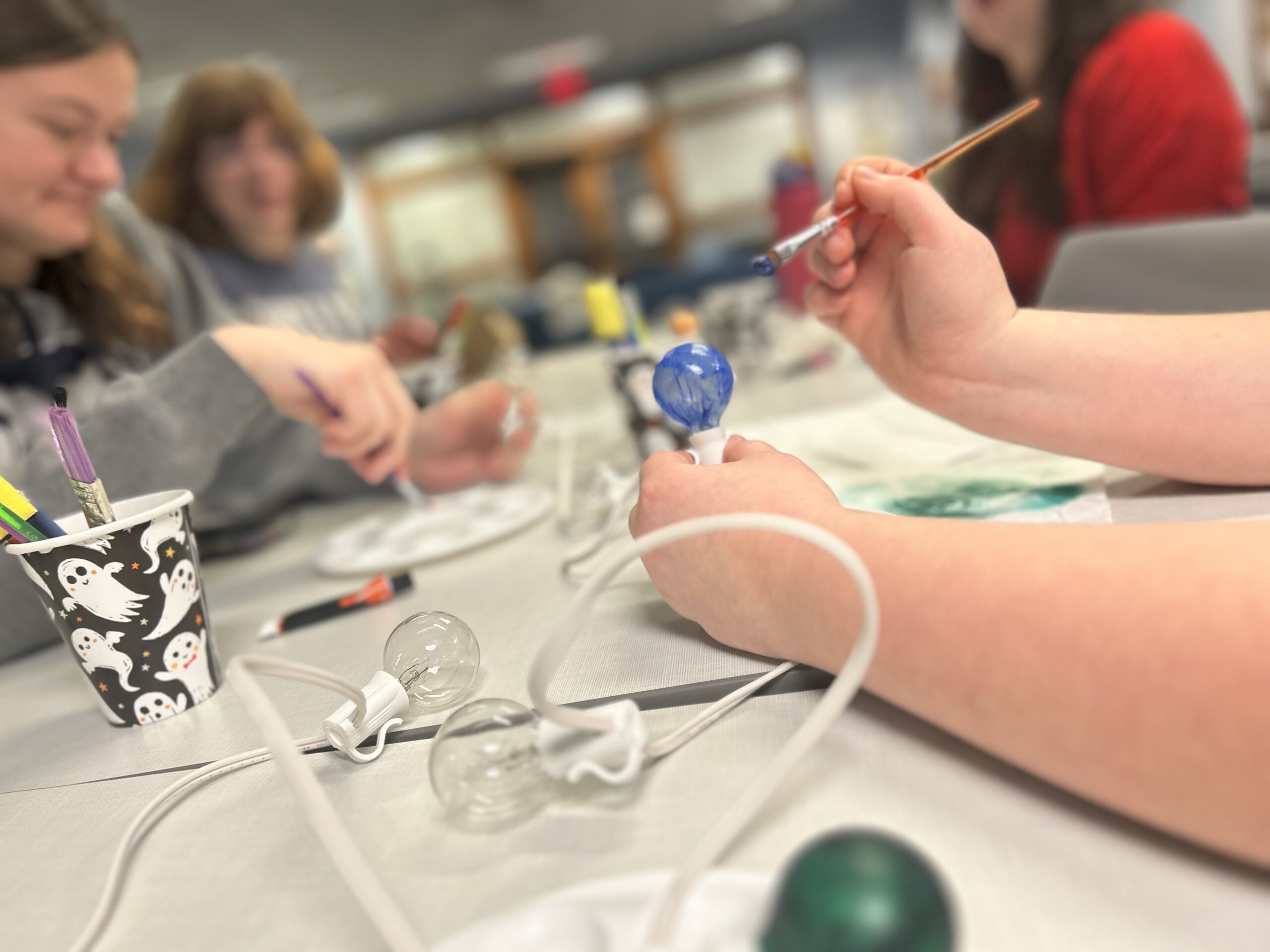BUD hosted its second celebration of Rare Disease Day by combining advocacy and art. Photo by Jasper Pilarz.
JASPER PILARZ | NEWS CO-EDITOR | lpilarz@butler.edu
Rare Disease Day is hosted on the last day of February each year, typically the 28th or the 29th on a leap year. In anticipation of Rare Disease Day 2025, Bulldogs for Universal Design (BUD) hosted two speakers and a light painting event on Feb. 27 to bring that awareness to campus.
The National Organization for Rare Disorders (NORD) founded Rare Disease Day in 2008. This year marks BUD’s second annual celebration of their own. In the Efroymson Diversity Center, the BUD executive board — alongside two student speakers — educated attendants on the importance of awareness for rare diseases.
In the introductory presentation, BUD shared that nearly 90% of all rare diseases have no FDA-approved treatments due to a lack of research and funding.
Because knowledge of them is so low, rare diseases are often misdiagnosed, oftentimes with their rarity being used as evidence. Zebra print has come to represent NORD and rare diseases as a twist on the phrase, “When you hear hoofbeats, think horses, not zebras,” which is often employed to explain the logic used by doctors for not diagnosing patients with rare diseases.
First-year biology major Emma Messing said that before attending the event, she was not aware of how often people were being misdiagnosed or denied diagnosis of their rare diseases.
“I learned that some doctors are very hesitant to go after [a rare disease diagnosis], just because they don’t know what it is, or they’ll just dismiss it by saying, ‘Hey, you’re fine,’” Messing said. “Obviously, there’s still research to be done, but that doesn’t mean that you just have to turn your patients away.”
The middle portion of the event was given to two student speakers, who accepted BUD’s invitation to advocate for their own rare diseases. Senior strategic communication major Andie Kalemba was one of these two speakers, and she shared her story of living with Fanconi Anemia (FA).
In alignment with the event’s mission, Kalemba also shared her own experience as an advocate for FA awareness as a member of the FAdults Council.
“We are quickly becoming [a bigger organization],” Kalemba said. “A lot of people are being diagnosed later in their later years, [not just] being diagnosed when they’re just born or as a kid. Especially new doctors and researchers — just like every other disease that happens — they need to know what it is, and we need to properly diagnose people.”
She also noted how important it was for BUD to host an event for Rare Disease Day, as even her own organization had only been made aware of the day in the last five years. Before speaking at this event, Kalemba said she hadn’t had any other opportunities to advocate for FA on campus.
Following the presentation and speakers, BUD executives and attendees worked together to paint a string of lights to represent different rare diseases. The activity allowed those present to research different rare diseases on their own, as well as reflect on their findings and pre-existing knowledge.
Senior elementary education major Allison McElroy is the vice president of BUD.
McElroy explained why BUD chose light painting to pair with the speakers.
“A saying [NORD coined] for Rare Disease Day is ‘Light it up rare’, which is a way to say, ‘Let’s be proud of our of who we are, and let’s share about it, and let’s spread awareness,’” McElroy said.



